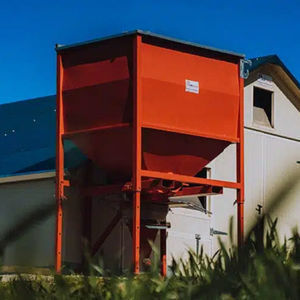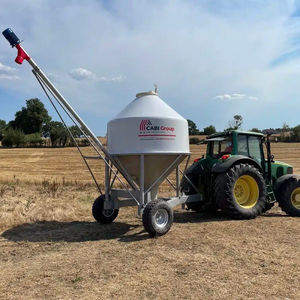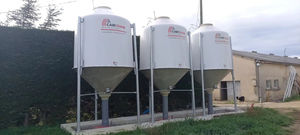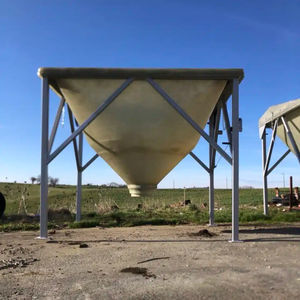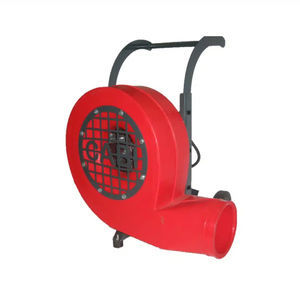
- Products
- Catalogs
- News & Trends
- Exhibitions
Indoor silo for grainpolyestercone-bottom
Add to favorites
Compare this product
Characteristics
- Application
- for grain
- Material
- polyester
- Form
- cone-bottom
- Other characteristic
- indoor
- Volume
Min.: 3 m³
(106 ft³)Max.: 42 m³
(1,483 ft³)
Description
The indoor grain silo on cone
The indoor grain silo on cone is designed for storing livestock feed and other industrial products (granule, grain, powder and fertilizer). The silo consists of a painted frame and a polyester cone. The cone shape ensures optimum emptying of the silo, preventing any feed wastage. This silo is designed for an indoor installation. Made from quality materials, this CABI indoor on cone is durable and highly reliable.
Available in a range of sizes and capacities, this silo will meet the storage needs of any farm, large or small. Many options can be added, such as a ventilation system for better preservation and quality of the products. You can then convey its contents using our rigid or flexible distribution grain augers.
Technical specifications of the indoor grain silo on cone
• Made up of 2 factory-assembled parts: a painted frame and a polyester cone
• Standard outlet height under cone: 70cm. Height can be modified on request
• 4 cone diameters available for capacities from 1 to 30 tons (please contact us any capacity over 30 tons).
The silo is made of robust polyester just like our CABI polyester hopper.
*Prices are pre-tax. They exclude delivery charges and customs duties and do not include additional charges for installation or activation options. Prices are indicative only and may vary by country, with changes to the cost of raw materials and exchange rates.


